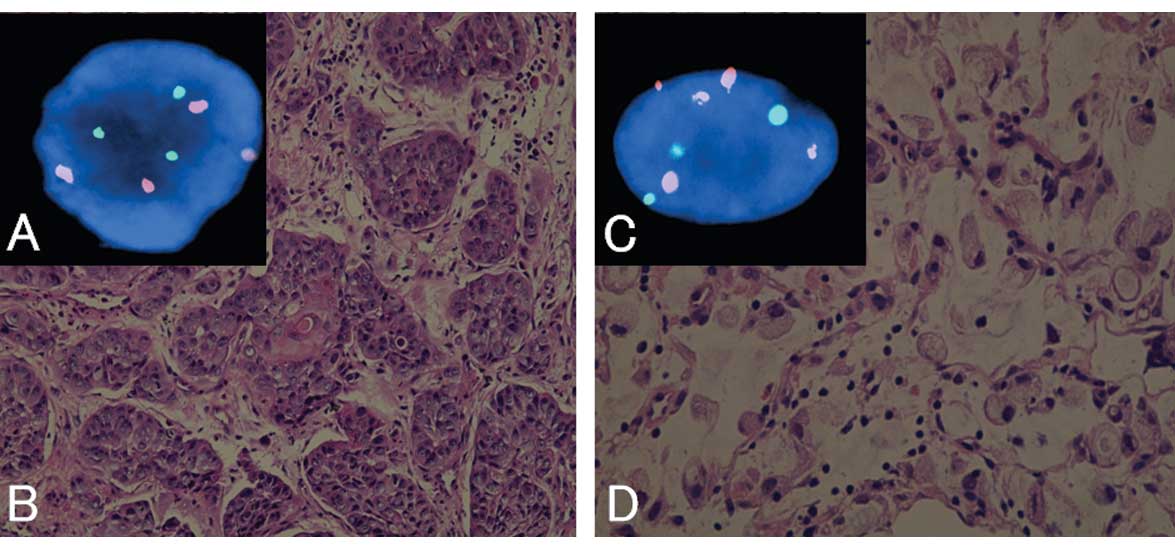|
1
|
Zhang YM: Distribution of esophageal
cancer in the Xinjiang. XMU Med. 11:139–145. 1988.
|
|
2
|
Enzinger PC and Mayer RJ: Esophageal
cancer. N Engl J Med. 349:2241–2252. 2003. View Article : Google Scholar : PubMed/NCBI
|
|
3
|
Krasna MJ: Multimodality therapy for
esophageal cancer. Oncology. 24:1134–1138. 2010.PubMed/NCBI
|
|
4
|
Odze RD: Barrett esophagus: histology and
pathology for the clinician. Nat Rev Gastroenterol Hepatol.
6:478–490. 2009. View Article : Google Scholar : PubMed/NCBI
|
|
5
|
Yerian L: Histology of metaplasia and
dysplasia in Barrett's esophagus. Surg Oncol Clin N Am. 18:411–422.
2009. View Article : Google Scholar
|
|
6
|
Duesberg P, Li R, Rasnick D, Rausch C,
Willer A, Kraemer A, Yerganian G and Hehlmann R: Aneuploidy
precedes and segregates with chemical carcinogenesis. Cancer Genet
Cytogenet. 119:83–93. 2000. View Article : Google Scholar : PubMed/NCBI
|
|
7
|
Rajagopalan H and Lengauer C: Aneuploidy
and cancer. Nature. 432:338–341. 2004. View Article : Google Scholar
|
|
8
|
Halling KC and Kipp BR: Fluorescence in
situ hybridization in diagnostic cytology. Hum Pathol.
38:1137–1144. 2007. View Article : Google Scholar : PubMed/NCBI
|
|
9
|
Fritcher EG, Brankley SM, Kipp BR, Voss
JS, Campion MB, Morrison LE, Legator MS, Lutzke LS, Wang KK, Sebo
TJ and Halling KC: A comparison of conventional cytology, DNA
ploidy analysis, and fluorescence in situ hybridization for the
detection of dysplasia and adenocarcinoma in patients with
Barrett's esophagus. Hum Pathol. 39:1128–1135. 2008. View Article : Google Scholar : PubMed/NCBI
|
|
10
|
Idiris A, Madiniyet N, Xie HZ, Hadeti B,
Zhang HY, Zhang Z, Ilyar S, Zhang CM, Zhang LW and Wen H: Genetic
diagnosis of patients with esophageal cancer using FISH. Oncol
Lett. 1:809–814. 2010.PubMed/NCBI
|
|
11
|
Murphy CG and Fornier M: HER2-positive
breast cancer: beyond Trastuzumab. Oncology. 24:410–415.
2010.PubMed/NCBI
|
|
12
|
Han QY, Shun H, Yu PW, Xiao CW, Ya LH and
Xin X: Application of multicolor fluorescence in situ hybridization
to early diagnosis of esophageal squamous cell carcinoma. Chin J
Can. 27:1137–1143. 2008.PubMed/NCBI
|
|
13
|
Yang Y, Fruehauf J, Xiang S and Li CJ:
Genomic instability in precancerous lesions before inactivation of
tumor suppressors p53 and APC in patients. Cell Cycle.
13:1443–1447. 2006. View Article : Google Scholar : PubMed/NCBI
|
|
14
|
Nakamura H, Aute I, Kawasaki N, Taguchi M,
Ohira T and Kato H: Quantitative detection of lung cancer cells by
fluorescence in situ hybridization: comparison with conventional
cytology. Chest. 128:906–911. 2005. View Article : Google Scholar : PubMed/NCBI
|
|
15
|
Dey P: Aneuploidy and malignancy: an
unsolved equation. J Clin Pathol. 57:1245–1249. 2004. View Article : Google Scholar : PubMed/NCBI
|
|
16
|
Albertson DG, Collins C, McCormick F and
Gray JW: Chromosome aberrations in solid tumors. Nat Genet.
34:369–76. 2003. View
Article : Google Scholar : PubMed/NCBI
|
|
17
|
Falk GW, Skacel M, Gramlich TL, Casey G,
Goldblum JR and Tubbs RR: Fluorescence in site hybridization of
cytologic specimens from Barrett's esophagus: a pilot feasibility
study. Gastrointest Endosc. 60:280–284. 2004. View Article : Google Scholar
|
|
18
|
Fahmy M, Skacel M, Gramlich TL, Brainard
JA, Rice TW, Goldblum JR, Connor JT, Casey G, Legator MS, Tubbs RR
and Falk GW: Chromosomal gains and genomic loss of p53 and p16
genes in Barrett's esophagus detected by fluorescence in situ
hybridization of cytology specimens. Mod Pathol. 17:588–596. 2004.
View Article : Google Scholar : PubMed/NCBI
|
|
19
|
Fiegl M, Massoner A, Haun M, Sturm W,
Kaufmann H, Hack R, Krugmann J, Fritzer-Szekeres M, Grünewald K and
Gastl G: Sensitive detection of tumour cells in effusions by
combining cytology and fluorescence in situ hybridisation (FISH).
Br J Cancer. 91:558–563. 2004. View Article : Google Scholar : PubMed/NCBI
|
|
20
|
Bahmanyar S and Ye W: Dietary patterns and
risk of squamous-cell carcinoma and adenocarcinoma of the esophagus
and adenocarcinoma of the gastric cardia: a population based
case-control study in Sweden. Nutr Cancer. 54:171–178. 2006.
View Article : Google Scholar : PubMed/NCBI
|
|
21
|
Delektorskaya VV, Chemeris GY, Zavalishina
LE, Ryazantseva AA, Grigorchuk AY, Kononets PV and Davydov MI:
Squamous cell carcinoma of the esophagus: evaluation of the status
of epidermal growth factor receptors (EGFR and HER-2) by
immunohistochemistry and in situ hybridization. Bull Exp Biol Med.
149:615–620. 2010. View Article : Google Scholar : PubMed/NCBI
|















